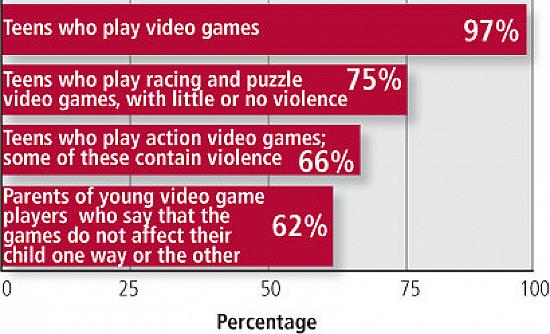French prosecutors have issued a stark warning about the growing influence of violent extremist videos in radicalizing teenagers and drawing them into terror-related activities. Recent investigations reveal that graphic online content is playing a significant role in recruiting impressionable youths, fueling concerns over national security and the effectiveness of current counter-terrorism measures. As authorities grapple with containing this digital threat, the debate intensifies over how to curb the spread of such material while protecting civil liberties.
Rising Influence of Violent Videos on Teen Radicalization in France
French judicial authorities are raising alarms over the escalating role of violent online videos in steering teenagers toward extremist ideologies. These graphic and often ideologically charged clips serve as recruitment tools, exploiting youthful curiosity and vulnerability to nurture sympathy for terror groups. Prosecutors highlight that the immersive nature of the content not only desensitizes young viewers but often incites active participation in radical plots, compounding the risk of homegrown terrorism.
Key factors identified in this troubling trend include:
- Accessibility: Videos circulate freely across social media platforms, with minimal moderation.
- Manipulative Messaging: Content is crafted to resonate emotionally, fostering a sense of belonging.
- Peer Influence: Radicalized teens often share videos within their networks, amplifying exposure.
- Algorithmic Reinforcement: Platforms’ recommendation systems often promote similar content, deepening engagement.
| Age Group | Reported Exposure to Violent Videos | Cases Linked to Radicalization |
|---|---|---|
| 13-15 years | 35% | 12 |
| 16-18 years | 50% | 27 |
| 19-21 years | 60% | 35 |
French Prosecutors Identify Key Online Platforms Fueling Terror Recruitment
Authorities in France have recently highlighted the pivotal role certain digital platforms play in the rise of extremist recruitment, particularly among younger demographics. The use of violent videos as recruitment tools has intensified concern, with prosecutors pinpointing that these graphic visuals are not just spreading terror propaganda‚ÄĒthey are actively luring teenagers into radicalized networks. The immersive and often sensational nature of these videos exploits vulnerabilities, especially during the formative years of identity and belief development.
Key platforms under scrutiny include:
- Video streaming sites with minimal content moderation
- Encrypted messaging apps facilitating private group communication
- Social media networks hosting extremist content disguised as political commentary
| Platform Type | Recruitment Tactics | Target Audience |
|---|---|---|
| Video Streaming | Shock content and dramatized attacks | Teens & young adults |
| Encrypted Messaging | Private radicalization circles | Young recruits |
| Social Media | Disguised extremist propaganda | General public |
Psychological Impact of Graphic Content on Adolescent Vulnerability
The relentless exposure to violent videos exerts a profound psychological toll on teenagers, shaping their perceptions and emotional responses in harmful ways. These graphic visuals can normalize aggression and desensitize young viewers to real-world violence, eroding their capacity for empathy and increasing susceptibility to extremist narratives. French prosecutors emphasize that adolescents, whose cognitive and emotional development is still underway, are particularly vulnerable to manipulation through this disturbing content, which can act as a catalyst for radicalization and recruitment into terror plots.
Experts identify several critical psychological effects stemming from such exposure:
- Heightened anxiety and fear: Continuous graphic imagery fosters a pervasive sense of insecurity.
- Distorted worldview: Teens may begin to view conflict as a viable solution to grievances.
- Impaired judgment: Emotional turmoil hampers decision-making processes.
- Increased impulsivity: A decreased ability to foresee consequences can lead to risky behaviors.
| Psychological Effect | Impact on Vulnerability |
|---|---|
| Desensitization | Eases acceptance of extremist ideology |
| Anxiety | Creates search for control and identity |
| Isolation | Increases dependence on online communities |
| Impulsivity | Leads to rash decisions and support for violence |
Strategies and Recommendations for Combating Digital Extremism Among Youth
Addressing the surge in youth drawn to radical content requires a multi-layered approach. Strengthening digital literacy programs can empower young internet users to critically evaluate the media they consume, fostering resilience against manipulative and violent extremist propaganda. Schools and community organizations should integrate tailored workshops that not only teach technical skills but also promote emotional intelligence and empathy to counteract the appeal of extremist narratives. Collaboration with social media platforms is equally crucial; algorithms must be adjusted to detect and demote violent content while promoting positive, inclusive messages.
Law enforcement and policymakers also recommend deploying proactive monitoring tools combined with support networks aimed at early intervention. Here is a concise overview of recommended strategies and stakeholder roles:
| Strategy | Stakeholders | Impact |
|---|---|---|
| Digital literacy & critical thinking education | Schools, parents, NGOs | Empowers youth to resist manipulation |
| Algorithm monitoring & content moderation | Tech companies, regulators | Limits exposure to harmful material |
| Early identification & intervention teams | Law enforcement, mental health services | Prevents radicalization escalation |
- Encourage open dialogue in families to discuss online risks and vulnerabilities.
- Promote inclusive community programs that offer meaningful alternatives to extremist groups.
- Support youth mental health initiatives to address underlying issues that may lead to radicalization.
In Summary
As French prosecutors continue to raise alarms over the role of violent videos in radicalizing teenagers, authorities face increasing pressure to develop effective strategies to counter online extremism. The growing influence of graphic content on vulnerable youths underscores the urgent need for enhanced surveillance, education, and international cooperation. As the digital landscape evolves, balancing freedom of expression with public safety remains a critical challenge for governments and civil society alike.




